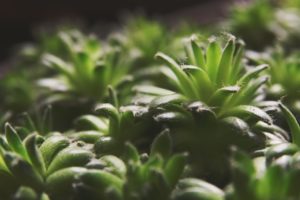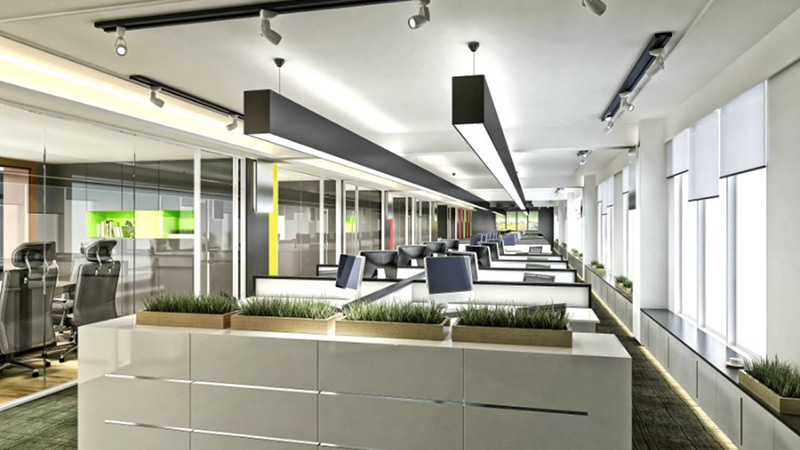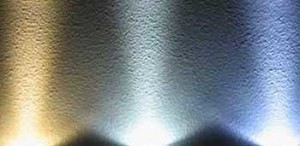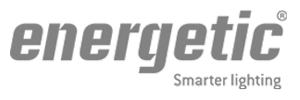 With lighting technologies for indoor gardening and farming continuing to advance at breakneck speed, more and more cultivators are beginning to see the benefits of using LEDs as their main grow lights.
With lighting technologies for indoor gardening and farming continuing to advance at breakneck speed, more and more cultivators are beginning to see the benefits of using LEDs as their main grow lights.
Besides the much-touted energy efficiency and durability of LEDs, growers are also realizing that compared to high pressure sodium (HPS) lamps, LEDs—when used properly—can improve product quality, increase yield, and make the entire supply chain more efficient.
If you’re thinking of setting up an indoor garden in your Scottsdale home, follow these lighting tips to get the most out of your LED grow lights.
Don’t Be Afraid to Install Multiple LEDs
Most LEDs have a targeted beam angle, which makes them great as individual spotlights when you want to hit specific sections of your grow with focused light. Still, we would recommend going for an even spread of light by taking the total surface area of your grow and multiplying it with the ideal number of LED bulbs. This ensures your LED beams overlap and produce an even distribution of light across your canopy.
Now for the big question: how many LEDs do you need for your setup? This takes quite a bit of math, but this guide by LED Grow Lights Depot should help you. You can also call in a lighting specialist to help you out.
Monitor Your Watering
Overwatering tends to be an issue common among cultivators just transitioning from HPS or HID fixtures to LEDs. The reason is simple: when you use an HID lamp, you increase your water to compensate for the high levels of heat and infrared (IR) light generated by these bright lights. If you’re not careful, you run the risk of drying out your plants and soil.
LEDs on the other hand, generate very little heat and virtually no IR light, so be sure to scale back on your usual watering regimen.
Watch Your Heat
Still on the subject of heat, cultivators using HIDs tend to rely on the high heat generated by these lamps when setting the ambient temperatures of their growing facility. With LED grow lights, you need to be careful about your ambient temperature being too low, which again, can damage your grow.
The simple solution is to turn up your grow facility’s temperature. While this might mean your electricity consumption for heating would see an increase, the energy savings you get from your LED lighting should be enough to generate positive net savings.
Get Your Mounting Height Right
Again, because LEDs run cooler than other grow lighting solutions, how high (or low) you mount your grow lights goes a long way toward maintaining or increasing your yield and product quality.
While determining the ideal mounting height for your LEDs can be a complicated affair, with factors to consider including number of bulbs and available of natural sunlight, a good rule of thumb is to ensure your LED grow lights generate a wide and even distribution of light.
Consider three things when mounting your LEDs:
- Choose grow lights with a wide beam spread
- Avoid mounting your LEDs too high as this can reduce each bulb’s intensity
- Avoid mounting too low as this can damage your plants
Obviously, this takes a little bit of experimentation. Fortunately, most LED grow light manufacturers include recommended mounting heights on the packaging/instruction manual to help cultivators in this matter.
Follow these tips and your LED grow lights should be the smartest investment you make for your grow setup.


 Apartment Lighting
Apartment Lighting Area Lighting
Area Lighting Automotive Lighting
Automotive Lighting Building Wall Pack Lighting
Building Wall Pack Lighting Canopy Lighting
Canopy Lighting High & Low Bay Lighting
High & Low Bay Lighting Industrial Lighting
Industrial Lighting Parking Lots & Garages
Parking Lots & Garages Pathway Lighting
Pathway Lighting Retail Lighting
Retail Lighting Stairwell Lighting
Stairwell Lighting























